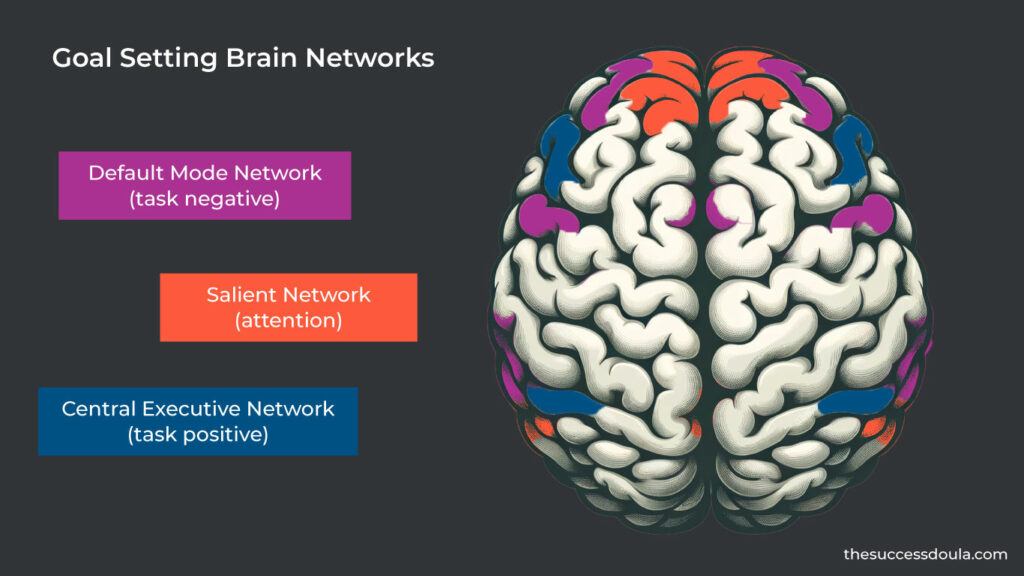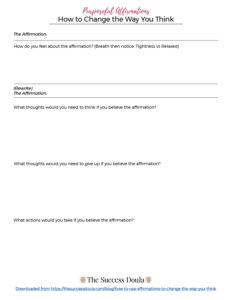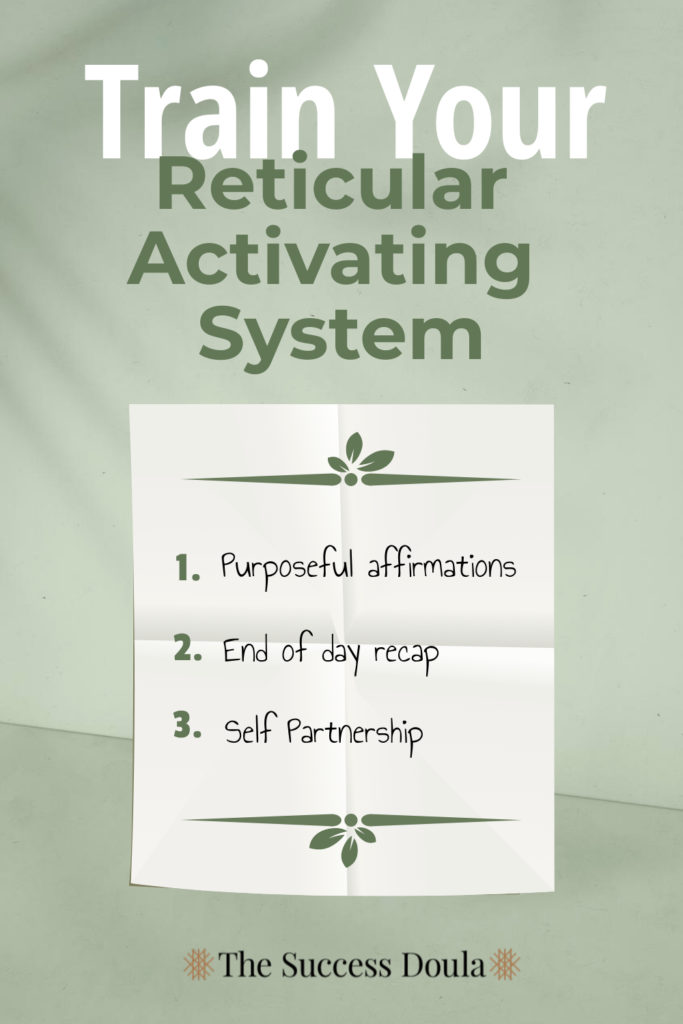Finding Your Keystones: A Scientific Approach to ADHD and Personal Growth
Living with ADHD can often feel like navigating a fast-moving river, where the currents of thoughts, distractions, and impulses threaten to steer you off course. What if there was a simple way for you to stay on track? Finding your keystones—those core values and principles that define and ground you—can be like discovering a compass that helps guide you through the uncertain waters of life with purpose and clarity.
Values for a Company vs Values for a Person
Ever been on a website that has a clearly defined mission statement? There’s a reason for that. Mission statements articulate the essence of a company's ethos, guiding its direction and defining its standpoints. This clarity sets the tone, enriching interactions and fostering connections between employees and customers. Yet, the concept of articulating such foundational elements isn't often applied on a personal level in traditional education. Instead, many find themselves adrift, attempting to navigate their path by mirroring others, only to discover that what works for someone else doesn’t work for them, especially when you have ADHD. “Great” advice is often only great for people with neuro-typical minds, securely attached, and without adverse childhood experiences (trauma). This leads to cycles of vision boarding (or other kinds of visualization techniques) without results.
The missing piece is having clearly defined values. For individuals with ADHD, understanding and applying this concept becomes even more crucial. The neurobiological differences between ADHD and neurotypical individuals mean that traditional methods of finding focus and direction might not always be effective. This is where keystones come into play. Keystones are the words you choose to define who you are and how you are going to show up in the world. Your keystones not only help to guide decision-making but also become an anchor to manage mental and emotional energies.
Priming the Mind for Success with Keystones
The emphasis on "clearly defined" values is not arbitrary. Words carry weight, and the meanings we attach to them often operate below our conscious awareness, influencing our perceptions and behaviors from the shadows of our subconscious. This programming influences our perceptions and behaviors in ways we may not fully realize. To change them, you need to dive beneath the surface, examining the foundational thoughts associated with the language we use.
Consider the word "abundance," a common word people use in manifestation circles. When I hear someone use that word as an affirmation, if I have the time, I'll ask them to explain what abundance truly means to them. Most people don't know indicating a lack of personal connection to the word and not having a defined concept of abundance.
An example that comes to mind is when a client who believed only selecting her keystones was sufficient. And you can probably guess what one of her words was... yep, "abundance." Of course since she was my client, we went deeper to uncover the mixed signals her subconscious associated with her chosen words. Upon deeper exploration, she realized her association with "abundance" equated to possessing lots of things. And the kicker was that she realized she had been manifesting her subconscious understanding of abundance… she was living in clutter.
The process of consciously defining your keystones does more than just clarify your values; it primes your mind by bringing subconscious thoughts to the surface and aligning them with your conscious objectives. This priming is critical, especially for individuals with ADHD, as it helps to navigate the often overwhelming stream of stimuli with intention and purpose. By thoroughly defining what each chosen word truly means, you lay the groundwork for a mindset that is prepared to recognize and pursue opportunities that align with your deepest values.
When you define "abundance" (or whatever words you choose) not just as an abstract concept but as a personal and meaningful keystone, you shift your perception and, consequently, your reality. This shift is not about mere positive thinking but about creating a powerful mental framework that supports your goals and reflects your true self.
How to focus with ADHD: Harnessing the Reticular Activating System (RAS)
At the core of why keystones are so effective for individuals with ADHD lies in the function of the Reticular Activating System (RAS). This network of neurons within the brain acts as a gatekeeper, filtering the vast array of stimuli we encounter and deciding what information gets attention based on what we consciously or subconsciously deem important.
Imagine you're in a crowded coffee shop trying to read a book that you are eager to finish. Despite the surrounding noise—people talking, the sound of the espresso machine, background music—you find yourself able to concentrate on reading. This is the RAS at work, filtering out the extraneous noise and allowing you to focus on the task at hand. It selectively tunes into the pages of your book while tuning out other stimuli.

By consciously defining keystones, you essentially program the RAS to be attuned to the things you want to be focused on. This simplifies decision-making as your brain is predisposed to notice and focus on the thoughts and actions you have already defined for your keystones, guiding your attention toward making decisions that move you forward rather than feeling stuck in overwhelm or analysis paralysis.
Moreover, the science behind staying focused, particularly how dopamine plays a role in motivation and attention, intertwines with the RAS's functionality. The RAS is one of the largest dopamine producing areas of the brain. If you suffer from ADHD symptoms frequently, dopamine production is at the heart of the problem.
When your actions and environment reflect your keystones, it can enhance dopamine responses, reinforcing focus on tasks and goals aligned with your big vision for your future. This creates a helpful cycle, where your defined keystones not only guide your focus but also boost your motivation and satisfaction in pursuing them.
Reducing ADHD Symptoms Through Keystones
The influence of clearly defined keystones extends far beyond mere focus and filtering; it profoundly impacts our executive functions and emotional responses. Research within psychology and neuroscience illustrates that aligning daily life with one's core values can markedly improve emotional well-being, bolster cognitive flexibility, and enhance motivation—areas where individuals with ADHD often face significant hurdles.
Enhancing Emotional Regulation through Keystones
Living in harmony with one's keystones not only fosters a greater sense of self-integrity and coherence but also significantly enhances emotional regulation. This alignment stabilizes emotional states, enabling individuals to navigate through challenges with resilience and an adaptive stress response. Particularly for those with ADHD, where emotional dysregulation can significantly impact daily functioning, the integration of keystones into daily routines and habits provides some structure for managing emotions more effectively. This leads to reduced levels of stress, anxiety, and depression, while acting as a protective buffer against emotional outbursts.
Fostering Intrinsic Motivation through Keystones
Intrinsic motivation, the internal drive to do things, stands at the core of transforming how individuals with ADHD approach their goals and daily tasks. Imagine Sarah, a graphic designer with ADHD, who often found herself waiting to the last minute to complete her projects. The fear of disappointing her clients would spur her into action. When Sarah identified her keystones—creativity, connection, and growth—she experienced a profound shift. No longer was her motivation tethered to the fear of letting her clients down. Instead, Sarah found herself driven by the joy of creation, the fulfillment from meaningful collaborations, and the excitement of personal and professional development. This transition from extrinsic reliance to intrinsic motivation allowed Sarah to engage with her work authentically and passionately, transforming her challenges into opportunities for innovation and resilience.
By anchoring oneself in keystones, individuals like Sarah pivot towards a life where motivation comes from within, instead of seeking approval from outside themself leading to a grounded sense of self that creates forward movement. Setbacks become less about failure and more about growth, fostering a resilient and motivated mindset essential for navigating life's ebbs and flows with ADHD.
Improving Executive Function Through Keystones
Executive function, orchestrated largely by the prefrontal cortex, acts as the brain's command center for managing tasks like attention, memory, and impulse control. In individuals with ADHD, shifting to this kind of thinking is often difficult due to imbalances in the brain’s dopamine system, leading to difficulties in managing these executive tasks. Dopamine is crucial for prioritizing tasks, maintaining focus, and feeling motivated by achievements. Keystones, by providing a clear set of value-driven behaviors and thoughts, directly affect this neurochemical balance, offering a foundation upon which individuals can enhance their executive functioning.
When actions and long-term aspirations are aligned with personal keystones, it's more than goal-setting; it's engaging in a deliberate practice that reinforces dopamine production in a manner conducive to bolstering executive function. Take Alex, for example, a writer grappling with the common ADHD challenge of starting and finishing projects. By identifying "expression," "consistency," and "engagement" as his keystones, Alex approaches each writing session as an opportunity to transform tasks he usually procrastinated into meaningful expressions of himself. This alignment not only reduces stress and decision fatigue but also leverages the neuroplastic capabilities of the brain, particularly in the prefrontal cortex, to foster pathways that enhance focus, planning, and task initiation.
Nervous System Regulation Through Keystones
The journey of managing ADHD and enhancing executive function extends beyond the brain's cognitive processes to encompass the broader nervous system, including the critical role of the vagus nerve in regulating our stress responses. The vagus nerve serves as a key component of the parasympathetic nervous system—the body's counterbalance to the fight-or-flight responses of the sympathetic nervous system. Effective regulation of these systems is paramount in managing ADHD symptoms, as stress and anxiety can exacerbate challenges with focus, impulsivity, and emotional regulation.
Keystones (aka fostering a mindset aligned with personal values and aspirations) can significantly influence nervous system regulation. Engaging in behaviors and thoughts that reflect one's keystones activates the parasympathetic nervous system, encouraging states of calm and relaxation that counteract the hyperarousal often experienced by individuals with ADHD. This shift towards parasympathetic dominance reduces stress and anxiety levels, creating a physiological environment conducive to improved focus and emotional balance.
For instance, through the process of creating your keystones you identify thoughts and actions that align with your core beliefs. These behaviors (compassionate thoughts, mindful actions) can stimulate the vagus nerve, enhancing its tone and thereby bolstering the body's resilience to stress. This enhanced vagal tone supports a more balanced nervous system, enabling individuals with ADHD to navigate their daily lives with greater emotional equilibrium and reduced susceptibility to stress-induced distractions.
Basically, what I’m saying is that by consciously thinking about things ahead of time, you’re more likely to do them even when you’re stressed because you have mentally rehearsed things. So instead of being stressed and repeating habits that you do when you’re stressed, such as productive procrastination, you don’t go into your stress response and instead activate the parasympathetic nervous system. The more time you spend less stressed and more relaxed, the less time you spend anxious or depressed.
Through the strategic definition and integration of keystones, individuals with ADHD can harness the power of their nervous system to support cognitive processes and emotional regulation, laying the groundwork for a life characterized by greater focus, fulfillment, and resilience.
Keystones help you thrive with ADHD
When you are living with ADHD symptoms, the journey towards personal growth and improved functionality hinges on our ability to understand and leverage our own neurobiology. Keystones are not just as a fun thing to do but a practical, neuroscience-backed tool for transformation. Through the process of identifying and integrating these keystones into our lives, we unlock a powerful mechanism for priming our minds, focusing our attention, regulating our nervous systems, and enhancing executive function.
The stories of individuals like Sarah and Alex illuminate the transformative potential of living in alignment with our keystones. They demonstrate that when we shift our motivation from external sources to the intrinsic values that define us, we not only find greater satisfaction and joy in the things we do but also cultivate ease in living despite the challenges.
This isn't merely about adopting a new set of habits or trying to fit into a neurotypical mold. It's about embracing our unique neurological landscape and using it to our advantage. By consciously defining our keystones and allowing them to guide our decisions and actions, we create a life that is not only manageable but truly fulfilling. We move from a state of constant reaction to one of intentional action, where each choice is a step towards realizing our true potential.
Remember, the path to managing ADHD effectively and achieving personal growth is not linear. It's a journey of exploration, understanding, and, most importantly, compassion for oneself. Your keystones are your compass on this journey, offering you direction when you feel lost and providing a sense of stability amidst the chaos.
You're not alone on this journey, and I’ve done the research, created a Keystones workbook and course and because I know how simple and effective it is, I give it away for free.
By consciously choosing and living by your keystones, you're not just managing ADHD symptoms; you're setting the foundation for a life of purpose, fulfillment, and achievement.

References:
Singh I, Filipe AM, Bard I, Bergey M, Baker L. Globalization and cognitive enhancement: emerging social and ethical challenges for ADHD clinicians. Curr Psychiatry Rep. 2013 Sep;15(9):385. doi: 10.1007/s11920-013-0385-0. PMID: 23933975.
NEUROSCIENTIFICALLY CHALLENGED - KNOW YOUR BRAIN: RETICULAR FORMATION
Martin, Andrew J., Emma C. Burns and Rebecca J. Collie. “ADHD, personal and interpersonal agency, and achievement: Exploring links from a social cognitive theory perspective.” Contemporary Educational Psychology 50 (2017): 13-22.
Shigemoto, Yuki, Blakely E. Low, Dominika Borowa and Christine Robitschek. “Function of Personal Growth Initiative on Posttraumatic Growth, Posttraumatic Stress, and Depression Over and Above Adaptive and Maladaptive Rumination.” Journal of clinical psychology 73 9 (2017): 1126-1145 .
Attention-Deficit/Hyperactivity Disorder (ADHD), with its distinctive neural pathways, presents a divergent landscape that influences an individual's capacity to navigate attention, organization, and emotional regulation. While ADHD presents unique challenges, it also brings forth a set of cognitive strengths that can be harnessed for success, particularly in the realm of entrepreneurship and goal setting.

Neurobiological Aspects of ADHD
Understanding the neurobiological aspects of ADHD is crucial for individuals to recognize that the executive dysfunction they experience is not a deficit or disorder, but rather a different way of thinking. ADHD is characterized by differences in brain structure and function, particularly in areas related to attention, executive function, and emotional regulation.
Individuals with ADHD may experience variations in the levels of the neurotransmitter dopamine. In particular dopamine plays an essential role in transitioning from the Default Mode Network to the Central Executive Network and how individuals with ADHD process information and engage in goal-directed behavior.
The Default Mode Network (DMN) is a collection of interconnected brain regions that are active during resting states. It is largely responsible for self-reflection, introspection, and inner thought processes. The DMN is often referred to as the “Task Negative” network, as it is active whenever an individual is not engaged in some sort of goal-oriented task. This network is responsible for facilitating default tasks that do not require active thinking, such as daydreaming, mind-wandering, and memory retrieval. The DMN is believed to be the foundation of our sense of self and plays a crucial role in our daily behaviors by retrieving memories and taking actions based on the outcomes of those memories.
On the other hand, the Central Executive Network (CEN) is a set of brain regions that become active when an individual is engaged in goal-oriented behavior. It is the network responsible for executive functions, which are cognitive abilities that allow us to manage and organize our behavior. The CEN is often referred to as the “Task Positive” network, as it helps individuals complete their to-do lists and engage in logical information processing. This network is the foundation of how individuals interact with the external world and is crucial for sustaining attention and detecting stimuli in the environment.
When our senses detect something in our environment that we should pay attention to, the salient network (also known as the attention network) shifts the brain’s focus from self-referential thoughts towards external goals. The shift requires dopamine.
If there is not enough dopamine in the brain, the ability to switch from the default mode network (DMN) to the Central Executive Network (CEN) is hindered if not impossible. To the outside observer, it might look like someone can’t stay focused or lacks motivation, but in reality, this represents a fundamental difference in how the ADHD brain manages and allocates attention and energy. This understanding is vital, not only in reducing the stigma associated with ADHD but also in tailoring approaches to productivity and goal achievement that align with this unique neurobiological makeup.

Research from West Virginia University has shed light on the cognitive advantages of individuals with ADHD in entrepreneurship, challenging traditional views of ADHD as a deficit and highlighting the unique cognitive strengths possessed by individuals with ADHD. Associate Professor Nancy McIntyre’s research emphasizes the development of “resource-induced coping heuristics,” where individuals with ADHD effectively manage and utilize vast amounts of information, potentially leading to entrepreneurial success [1] .
Individuals with ADHD possess a unique blend of curiosity, creativity, and innovation, which are often key drivers of success. This creativity and innovation, combined with their predisposition to speedy cognitive processing and quick decisions, enable individuals with ADHD to continually scan their environments and swiftly shift their attention from old data to new. Moreover, their high degree of adaptability allows them to change course when necessary, challenge their own assumptions, and double-check their comprehension about a problem or task. These attributes collectively contribute to the entrepreneurial potential of individuals with ADHD, challenging traditional views and highlighting the cognitive advantages they possess in the realm of entrepreneurship and beyond[1].
Challenges in Goal Setting for Individuals with ADHD
Individuals with ADHD face unique challenges in setting and achieving goals, often due to the neurobiological underpinnings of their condition. These challenges can manifest in various ways, significantly impacting one's ability to pursue and attain personal and professional objectives.
Productive Procrastination
Productive procrastination, a common experience for many individuals with ADHD, involves engaging in seemingly productive activities that are unrelated to their primary goals and intentions. Imagine needing to work on an important project for your business, such as writing the content for the sales page of a new program you’re launching. The overwhelming importance of the task can lead to intense feelings of stress and uncertainty. This stress may stem from a fear of failure, a lack of confidence in one’s abilities, a deep-seated concern about not meeting the expectations of being a successful entrepreneur, or a thousand other unhelpful thoughts. This internal pressure can create a sense of overwhelm and contribute to a subconscious avoidance of the task at hand.
Imagine you need to do an important project for your business, such as writing the content for the sales page of the new program you're launching (task positive. You are super excited about the new project. It is fully aligned with your keystones and the big vision you have for your business and life.
As you open ChatGPT to start working on your content, you remember that you wanted to learn how to use ChatGPT to create an image for your blog post about your new program. So you go to YouTube, do a few searches and 2 hours later you have a decent image and a half written blog post.
While this activity may have some value, it ultimately serves as a distraction from the primary task at hand. Subsequently, you might find yourself drawn to other seemingly productive tasks, such as folding laundry or organizing your workspace, under the guise of creating a conducive environment for working on the sales page. This pattern of engaging in secondary tasks to avoid the primary one is productive procrastination.
It’s important to recognize that productive procrastination is not simply a matter of poor time management or lack of discipline. Instead, it is often a manifestation of the stress response cycle, particularly in individuals with ADHD. When faced with a task of overwhelming importance, the stress response can lead to a decrease in energy available to handle the situation effectively. This can result in a tendency to engage in activities that provide a sense of accomplishment or control, even if they are not directly related to the primary task.
Moreover, productive procrastination can be exacerbated by the unique cognitive profile of individuals with ADHD. The constant influx of information and the predisposition to rapid cognitive processing can contribute to a pattern of shifting attention from one task to another, leading to difficulty in maintaining focus on the primary goal. This cycle of avoidance and distraction can hinder progress on important tasks, despite engaging in seemingly productive activities.
Analysis Paralysis
Analysis paralysis is a common challenge experienced by individuals, particularly those with ADHD, where the individual becomes stuck in a state of overthinking and uncertainty, unable to decide on the best course of action.
This often stems from a fear of making the wrong decision or from being overwhelmed by the possibilities. The “Freeze” stress response, or analysis paralysis, is an active state of stress where the person knows they are stressed and overwhelmed, yet they struggle to take action. The lack of dopamine to facilitate the transition from the default mode network to task-positive thinking further exacerbates this state, making it challenging to shift focus and engage in decisive action [2] [12] .
For example, imagine needing to make a crucial decision for your business, such as choosing the marketing strategy for your new program launch. As you sit down to evaluate the options, you find yourself overwhelmed by the multitude of possibilities and the fear of making the wrong choice. This state of heightened uncertainty and overthinking prevents you from taking decisive action, leaving you feeling stuck and unable to move forward.
In this state of analysis paralysis, the individual experiences a heightened level of self-referential thinking. Also known as self-referential cognition, refers to the process of focusing on oneself, one’s own experiences, emotions, and thoughts. It involves interpreting external events and information in relation to oneself, often leading to a heightened self-awareness and introspection. This type of thinking can be characterized by a strong focus on personal experiences, beliefs, and emotions, and it often involves evaluating oneself in comparison to others or to certain standards.
In the context of analysis paralysis and ADHD, self-referential thinking can contribute to overthinking and rumination, leading to a heightened level of self-criticism and self-doubt. Individuals experiencing analysis paralysis may find themselves caught in a cycle of self-referential thoughts, where they continuously evaluate their own abilities, decisions, and potential outcomes, often leading to a sense of being stuck and unable to move forward.
The unique cognitive profile of individuals with ADHD, characterized by rapid cognitive processing and difficulty in maintaining focus, can further exacerbate the challenges associated with shifting focus and engaging in decisive action. Recognizing the underlying factors contributing to analysis paralysis can empower individuals to develop tailored strategies for managing their cognitive responses and effectively addressing their primary goals and intentions.
Future Fantasizing aka Maladaptive Daydreaming
Future fantasizing, also known as maladaptive daydreaming, involves indulging in elaborate and vivid fantasies about an extraordinary life without considering the practical steps needed to achieve those aspirations. It often entails immersing oneself in a rich inner world, neglecting the current reality and responsibilities. For instance, it could involve spending hours searching on Pinterest or scrolling through Instagram, daydreaming about the future and all the things one will do once their goals are achieved.
Dreaming of fun, exciting things in the future feels good. This behavior can lead to a false sense of accomplishment and fulfillment without taking tangible steps toward actualizing those dreams. Moreover, future fantasizing can contribute to toxic positivity, where individuals focus solely on positive thoughts and dismiss or invalidate any negative emotions or challenges. This can create an unrealistic and unsustainable mindset, leading to a lack of motivation to address real-life tasks and responsibilities.
The role of dopamine is crucial in this context. Low levels of dopamine can keep individuals in a daydreaming state, preventing them from transitioning to task-positive actions and productive thinking. This can hinder their ability to focus on present tasks and engage in goal-oriented behavior, ultimately impacting their productivity and overall well-being.
When it comes to setting goals, having a habit of future fantasizing makes it difficult to set realistic goals particularly because the needed details to accomplish the goals are usually missing. In the world of productivity, people are often told to create SMART goals (Specific, measurable, actionable, realistic, and timely) but nearly every part of setting a SMART goal is unrealistic for someone with ADHD.
However, having a clear understanding of your big vision is essential in creating goals. Luckily, with a little practice and direction, someone with ADHD will excel at seeing the possibilities in the future and can use intrinsic motivation to stay on track towards achieving their goals.
Dopamine Chasing and Time Blindness
Often called “Shiny Object Syndrome”, dopamine chasing is a common challenge for people with ADHD. This condition is characterized by an insatiable pursuit of newness—be it a groundbreaking idea, a hobby, or a business venture—often at the expense of current commitments and responsibilities. But what exactly propels this relentless search for the novel, and how can those with ADHD navigate this terrain?
You probably guessed it by now… dopamine! Well, the lack of dopamine.
For entrepreneurs and creatives with ADHD, this need to explore new things can be a double-edged sword. On one side, it fosters innovation, resilience, and the ability to think outside the box—traits invaluable in the entrepreneurial world. On the flip side, it can lead to a cycle of unfinished projects, missed deadlines, and a pervasive sense of dissatisfaction. The thrill of the new often overshadows the commitment required to see tasks through to completion.
The impact of low dopamine levels on time perception is significant, as the constant seeking of dopamine-inducing activities can lead to unrealistic time perception. Low dopamine levels disturb the connectivity within and between regions of the DMN, specifically the medial prefrontal cortex and the posterior cingulate cortex. This can result in a disconnect between the perception of time and the actual time required for goal-oriented behavior and task completion
The interplay between dopamine-seeking activities, time perception, and goal setting in individuals with ADHD underscores the need to consider the impact of dopamine deficiency on time-related tasks and the formulation of realistic goals.
Tailored Approach to Goal Setting for Individuals with ADHD
Navigating the landscape of ADHD requires a nuanced understanding of its challenges, but it also calls for innovative strategies that capitalize on the unique strengths of a neurodivergent mind. The key to successful goal setting lies not in fighting against ADHD but working with it. Here’s how:
Structured and Flexible: Creating a strict schedule with very little room for distractions or changes isn’t going to work. Not having enough structure and routines isn’t going to work either. Spending time to create and develop an ideal weekly schedule and a minimal schedule with a realistic timeline will help you stay on track.
Focus on Wins: Celebrating small victories provides little boosts of dopamine and keeps the momentum going while building confidence in one’s ability to achieve bigger objectives.
Leverage Hyperfocus: While ADHD can make it challenging to sustain attention, it also allows for periods of intense focus, known as hyperfocus. Identify areas of strong interest or passion and align your goals with these areas to take advantage of this unique state of concentration.
Create a Supportive Environment: Surround yourself with people who understand and support your journey. Whether it's a mentor, coach, or peer group, having accountability partners can provide encouragement and remind you of your goals when distractions arise.
Neuro Reprogramming: Our limiting beliefs and self-talk can sabotage our goals before we even start. By becoming aware of disempowering stories and reframing them, we can rewire our brain's neural pathways in support of our goals.
Refine and Reflect: Regularly review your goals and the strategies you’ve employed to meet them. Reflecting on what works and what doesn’t allows for continuous refinement of your approach, making each attempt more effective than the last.
A New Perspective on Goal Setting with ADHD
By recognizing the strengths inherent in ADHD, such as creativity, resilience, and the ability to think outside the box, individuals can harness these qualities for success. The journey toward achieving one’s goals with ADHD is not about adhering to conventional methods but about finding and refining strategies that align with one’s unique cognitive style.
By shifting the narrative from one of deficit to one of difference, we open up a world of possibilities where the ADHD neurodivergent mind is not a barrier but a bridge to achieving remarkable goals.
Get the FREE Goal Setting with ADHD Checklist
References:
- Lanivich, S.E., Moore, C. and McIntyre, N. (2024), "The effects of neurodiversity on cognitive attributes of entrepreneurs", International Journal of Entrepreneurial Behavior & Research, Vol. ahead-of-print No. ahead-of-print. https://doi.org/10.1108/IJEBR-12-2022-1079
- Franklin, M. S., Mrazek, M. D., Anderson, C. L., Johnston, C., Smallwood, J., Kingstone, A., & Schooler, J. W. (2017). Tracking Distraction: The Relationship Between Mind-Wandering, Meta-Awareness, and ADHD Symptomatology. Journal of Attention Disorders, 21(6), 475-486. https://doi.org/10.1177/1087054714543494
- Weissenberger, Simon & Schönová, Kateřina & Büttiker, Pascal & Fazio, Raffaele & Sebalo Vnukova, Martina & Stefano, George & Ptacek, Radek. (2021). Time Perception is a Focal Symptom of Attention-Deficit/Hyperactivity Disorder in Adults. Medical Science Monitor. 27. 10.12659/MSM.933766.
- Theodor-Katz, N., Somer, E., Hesseg, R. M., & Soffer-Dudek, N. (2022). Could immersive daydreaming underlie a deficit in attention? The prevalence and characteristics of maladaptive daydreaming in individuals with attention-deficit/hyperactivity disorder. Journal of Clinical Psychology, 78, 2309–2328. https://doi.org/10.1002/jclp.23355
- Sônego, M., Meller, M., Massuti, R., Campani, F., Amaro, J., Barbosa, C., & Rohde, L. A.. (2021). Exploring the association between attention-deficit/hyperactivity disorder and entrepreneurship. Brazilian Journal of Psychiatry, 43(2), 174–180. https://doi.org/10.1590/1516-4446-2020-0898
Do you ever find yourself stuck in a negative thought spiral? It can be tough to break out of that mindset, especially if it's been going on for a while. One way to start changing the way you think is by using affirmations. Affirmations are statements that you either repeat to yourself or write. They help to reprogram your brain and change the way you think about yourself and your life. In this blog post, we will discuss how to use affirmations to change the way you think!
Why Affirmations Don't Work
Before we begin I want to say that affirmations are a great tool if used correctly. However, most law of attraction methods are flawed in the way that they recommend using affirmations.
Affirmations only work when you your subconscious believes the affirmation. If your affirmation is not aligned with your unconscious or subconscious mind there is no way that you can make the affirmation work for yourself. When you read or say an affirmation that you do not believe your body responds based off the memories that are stored in your body.
No matter how much your conscious mind wants to believe what you are saying if your body is giving the signal to your subconscious mind then your subconscious will not believe it and will not take action.
All thoughts have two components: emotions and feelings. Emotions are the physical state of your body. Feelings are how we interpret the physical state (emotions). When your emotional state does not match your feelings, the brain knows that there is a disconnect. This disconnect is perceived as uncertainty and your brain is designed to reduce uncertainty.
That means you need to align your emotions and your feelings in order for affirmations to work. Affirmations work when paired with embodiment and neuro reprogramming
5 Steps to Optimize Affirmations
1. Pick affirmations that you resonate with.
If an affirmation sounds like bullshit or wishful thinking, it doesn't do you any good to write or say it. Pick affirmations that are aligned with your values. Don't worry about whether it is stated positively or not. Your mind is smart enough to understand what you are intending.
For example, it is perfectly fine to say "I will not let my clients take advantage of my time" instead of "I will create healthy boundaries with my clients." If you are not very good at creating and upholding boundaries, then repeating an affirmation about boundaries isn't going to work. On the other hand, your mind can get behind the notion of not letting your clients take advantage of your time because you know how valuable your time is.
2. Identify your emotions and feelings about the affirmation.
It's time to do a little embodiment practice. Take a breath (whatever kind is your favorite) then say the affirmation aloud. Notice how your body feels. Do you feel any tightness anywhere or are you relaxed?
If you feel tightness or anxiousness, you can either do some journaling on why you feel this way (which you should do at some point of time) or you should pick another affirmation. Maybe you need to rewrite it so it resonates more deeply with you.
When you breath and notice a relaxed or energized (confident, secure) sensation then you know that the affirmation is aligned with your emotional state attached to the meaning of that affirmation.
3. Think about what thoughts you would need to think if you really believed the affirmation.
The whole point of using affirmations to change the way you think is to create new thoughts. If you don't take the time to think differently, you're going to think the same as you always have. You will take the same actions and fall into the same habits that you are trying to break.
Take a few moments to think about what kinds of thoughts someone would think if they believed the affirmation. For example, let's say your affirmation is "I attract clients easily." You might need to think thoughts such as "There are plenty of people ready to learn how I help them change their lives," or "people are talking about how amazing my program is."
4. What thoughts would you have to give up if you believed the affirmation?
Spend a few moments to identify which thoughts you often have that go against the affirmation. This is an important step because once you become aware of the thoughts that you think that are not aligned with the life you are trying to create, then you will notice them when you have those thoughts.
When you do think one of these thoughts (and you will because it takes time to change your thought patterns) you'll be able to replace it with the new thoughts. You might not catch yourself in the moment, but whenever you do notice the thoughts you want to give up, acknowledge the thought, be kind to yourself, then think about your new thoughts.
5. Think about what actions you would take if you truly believed the affirmation.
Now that you know what thoughts you want to have and which thoughts you don't want to have, it's time to think about the sort of actions that someone would take that believed the affirmation.
How would things be different? What kinds of boundaries are needed? What would you say "yes" to? What would you say "no" to?
Purposeful Affirmations are powerful tools that can change the way you think. They work because they force you to confront your beliefs and root out any unhealthy thoughts or behaviors. The best part is, affirmation statements don't have to be positive in nature- it's what you feel about them personally that matters most. By using affirmations to create new thought patterns, eventually those old negative thoughts will disappear all together!
FREE EDITABLE JOURNAL PAGE
Want to change the way you think by using Purposeful Affirmations?
Grab this Purposeful Affirmations journal page so that you can break out of the mindset that has been holding you back.


You don't see the whole picture. You only see what your brain thinks you should be seeing. Our brains limit how much information we can take in at any given time, helping us focus on what's most important. It's helpful when there are too many distractions around us but it also means that sometimes we might not notice things that could help us achieve success or make better decisions because they're outside of our comfort zone.
What is the reticular activating system?
The reticular activating system (RAS) is a network in our brains whose primary purpose is to help us control what information we can take in at any given time. This system helps us transition from sleep to wakefulness, helps us focus, manages our stress response cycle, and shapes how we perceive the world.
At any moment in time, we are bombarded with information. What's the temperature? How much noise is there and where is the noise coming from? What are the smells? What is visually happening? What are the intentions of the people involved? Am I safe? Have I experienced this before? Do I know what to do in this situation?
As you can see, that's a lot of information to take in every second of the day. So the RAS filters the information so we don't get overloaded and stop functioning. But how does it know what to filter? The easiest, most energy efficient way for the brain to is to only allow information to come through that is similar to something you've already experienced.
By the time you reach 1 year old, you have already had 15,768,000 seconds of information that your brain has had to process. Yes, that includes sleeping but our brains don't turn off while we sleep, instead our brains are still perceiving information. That's a lot of information to catalog so to make something a priority, the RAS keeps looking for data that has emotional importance. This is called confirmation bias.
How does confirmation bias work?
The intensity of how we feel about something triggers the brain to catalog information as important. Then the brain compares it to previous experiences and what we felt in those moments. Together the emotional intensity and the feelings indicate whether something should be acted upon. This is basically how stress responses are activated.
Think of something in the political realm that you feel very passionately about. As soon as someone starts talking about it, if your perception of their words do not match the intensity and meaning that you have assigned, you will not be able to hear anything that the person says. This is the RAS and confirmation bias at work.
Confirmation bias is the brain's predisposition for us to hear, read, or see information that is closely related to the experiences we have had before. As soon as you take in information that contradicts your beliefs, your RAS will activate the stress response and instead of having energy directed to the cortex where logical thinking can occur, energy will be directed to the flight-or-fight responses.
Thanksgiving dinner arguments are basically inevitable thanks to the RAS and confirmation bias.
You can train your reticular activating system
Your initial reactions to information are based on your past experiences but they don't have to define your future. You have taken the first step in creating a new future by understanding how confirmation bias and the RAS work. Now it's time to use it to your advantage.
There are numerous ways to train your RAS not to send you into a stress response but these are my 3 favorite:
1. Purposeful affirmations
I'm actually not a fan of blanket affirmations because they don't work (thanks to the RAS). If you don't believe what the affirmation is or it doesn't match your previous experiences, confirmation bias will come into play and you won't change your beliefs.
However, if you take time to think about what an affirmation really means to you then you are using the executive functioning parts of your brain so you can actually start creating new thought patterns. Once you start having those new thoughts, then the RAS will look for information that supports those new thoughts.
2. End of day recap
There are several benefits of recapping events at the end of the day. Firstly, it allows you to reflect on what happened and how you felt during the event. This can help you learn from your experiences and make better decisions in the future. Secondly, recapping helps to solidify your feelings and emotions of the event but from a logical, conscious mind instead of a reactive, subconscious mind. Your initial reactions and feelings may not be aligned with the life you are trying to create. By reviewing how you reacted, you can train your reticular activating system to react differently the next time a similar event occurs.
3. Self Partnership
Self partnership is the term I use that represents taking ownership of your reactions, taking responsibility for your needs, and taking action towards getting the support you need. Whether you give yourself the support you need or you ask others, we all need to feel supported. I talk about this in my book "Get Unstuckable" and I guide members through the process of self partnership in our weekly Unstuckable Method membership meetings.
If you're looking for a supportive community that will help you stay accountable to your dreams, then consider joining the Unstuckable membership program.

When you need help, it can be tough to ask for it. You may feel like you're being a burden or if you ask for help it means you're not strong enough to do it on your own. Asking for help, however, is actually a sign of strength. It takes courage and vulnerability to reach out to others and ask for support.
If you feel like you always need to figure things out and do things on your own, it might actually be your trauma talking. When we are young we are praised when we play by ourselves and rewarded when we do things without asking for help because our caregivers want us to grow up and be self-sufficient adults. Kids are commended for being independent and self-reliant so to make their caregivers happy, they continue their independent actions and learn that it is best not to ask for help if they want their caregivers to be proud of them. Too often, this translates into needing to do EVERYTHING on our own and rarely asking for help.
We humans are social animals. We thrive in community. From the moment we are born, we need connection with others in order to feel safe and secure. We need to be held, to feel the touch of another human being. We need to hear our caregivers' voices and know that we are loved.
When you are deeply connected to your independence, it makes it difficult to reach out for help even though getting support from others may be exactly what you need.
We need connection. We need community. We need to feel seen and heard and understood. We need to know that we are not alone in our struggles and that we aren't the only ones feeling the same way.
When we ask for help, we are taking care of ourselves and others. We are acknowledging that we can't do everything on our own and that we need the support of others. We are also sending a message to those around us that it is safe to ask for help. When we see others asking for help, it makes it easier for us to do the same.
I personally am a big fan of having people in your life that you can stay accountable to. As a business owner (and especially as a business owner with ADHD), I need a group of supportive business owners that understand my struggles. Yes, I'm really good at organizing and coming up with plans and strategies, but implementing everything? Well, that's where I used to struggle the most.
That is where the Unstuckable Method and the Unstuckable membership comes into play.
The Unstuckable Method that I outline in my book "Get Unstuckable" is exactly what is needed to help me get the focus and motivation to keep showing up week after week in my business. It is based on neuroscience and helps you make progress in your goals and in creating a life you love.
The Unstuckable membership is an accountability group with people who understand your struggles and can help you stay on track. Showing up weekly not only provides the support but it also helps give motivation to reach your goals. If you have a hard time staying motivated or if you struggle with self-discipline then consider joining the Unstuckable membership.

